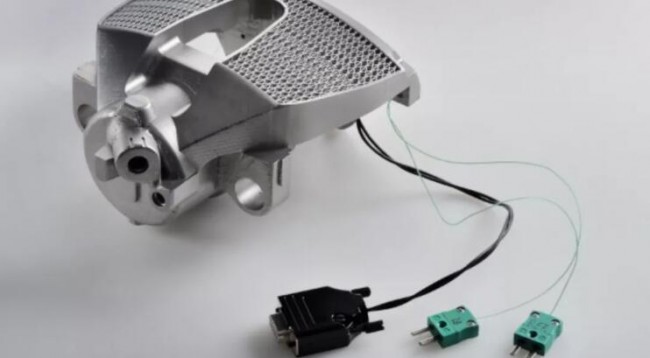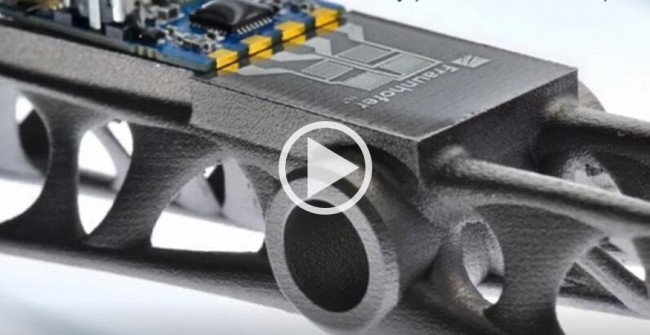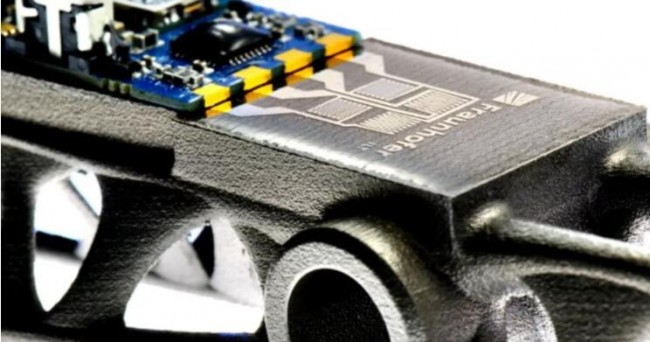Researchers and industry players are increasingly using 3D printing to improve and optimize sensor integration applications. An early popular application of the technology is wearable electronic sensors, such as Google’s “Jacquard” tag, which can be attached to everyday objects to give them motion-sensing capabilities. Google’s ATAP division used Stratasys’ PolyJet 3D printing technology to prototype the labels that would allow their wearers to control their phones through certain gestures.
3D printingIt is also used to produce other wearable technologies, such as piezoelectric-driven electronics, as well as sleep-monitoring “smart beds,” embedded sensor drones, and hydration sensors for remote crop monitoring, to name a few. And recently, according to market insights from 3D Science Valley, researchers at the Fraunhofer ILT in Aachen, Germany, are developing a 3D printed sensor system that can intelligently maintain train components.
 © 3D Science Valley 《3D printingand Electronics White Paper
© 3D Science Valley 《3D printingand Electronics White Paper
AI-powered sensor systems
Fraunhofer ILT worked with industry partners and with funding from the Federal Ministry of Economic Affairs and Energy to develop SenseTrAIn – an artificial intelligence (AI)-driven sensor system that continuously monitors the condition of 3D printed components wirelessly.
 © Fraunhofer ILT Aachen Fraunhofer Institute for Laser Research
© Fraunhofer ILT Aachen Fraunhofer Institute for Laser Research
Promising applications for sensor integration technology include train door mechanisms, primary and yaw dampers, and wheelset bearing caps. The ultimate goal of AI-powered sensor systems is to signal if, when, and where replacement or repair is needed.
 © Fraunhofer ILT Aachen Fraunhofer Institute for Laser Research
© Fraunhofer ILT Aachen Fraunhofer Institute for Laser Research
![]() Monitoring Track Components with SenseTrain
Monitoring Track Components with SenseTrain
SenseTrAIn is an efficient and intelligent method for monitoring safety-relevant functions in railway engineering, such as the monitoring of train doors and chassis components. Industry partners participating in the project together with Fraunhofer ILT include ME-Meßsysteme, developer of component-integrated sensors, DATAbility, developer of forecasting systems, and Vedisys, developer of transportation software.
Partners kicked off the project in September 2021 to work on the development and optimization of SenseTrAIn by 2024. The project is being carried out at the Technical Competence Centre of DB, Europe’s largest railway group, with the hope of setting up a network of routes for intelligent maintenance of European railways.
Ultimately, the project hopes to develop an integrated approach that could in the future involve sensors in train chassis and doors, linking Deutsche Bahn AG’s SAP system via 5G and reporting defects before they occur.
Defective rail components can cause operational delays and inconvenience to passengers. However, it is neither environmentally friendly nor economical to replace components that are still in working condition at strict maintenance intervals. The SenseTrAIn project partners hope to address these issues with their novel AI-driven sensor integration technology.
 © Fraunhofer ILT Aachen Fraunhofer Institute for Laser Research
© Fraunhofer ILT Aachen Fraunhofer Institute for Laser Research
Project partners are using laser powder bed fusion (LPBF) 3D printing technology to manufacture sensor-embedded components. LPBF enables electronic components such as sensors and actuators to be integrated into metal parts by pausing the printing process at a specific point to build the sensor into the part before continuing.
Components identified as potential applications for SenseTrAIN include door mechanisms, main and yaw dampers, and wheelset bearing clips that seal the wheel chocks. From a maintenance perspective, the wheelset bearing caps are critical components, as the increased load leads to increased temperatures and a greater risk of wear. With SenseTrAIn, temperature and acceleration sensors integrated in the lid can detect hot runners and their causes at an early stage.
To ensure the success of this project, Fraunhofer researchers in Aachen have identified the need for a large and efficient database to optimize the AI sensor combination. Scientists at the Fraunhofer ILT Laser Institute are using DB’s Trainlab to test the new sensor technology under realistic everyday conditions. Information gathered from the tests will be used to train the AI before the partners begin testing the system in day-to-day operations.
(Editor in charge: admin)


0 Comments for “Fraunhofer ILT develops 3D printed sensor system for intelligent maintenance of train components”